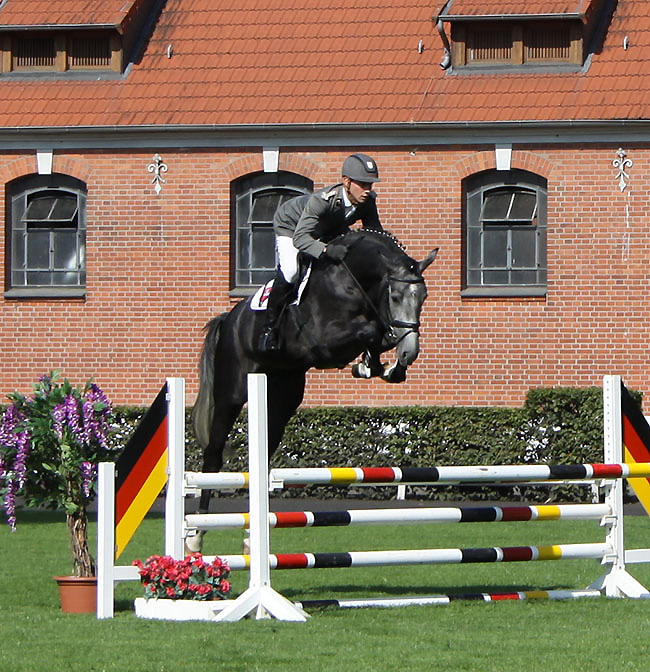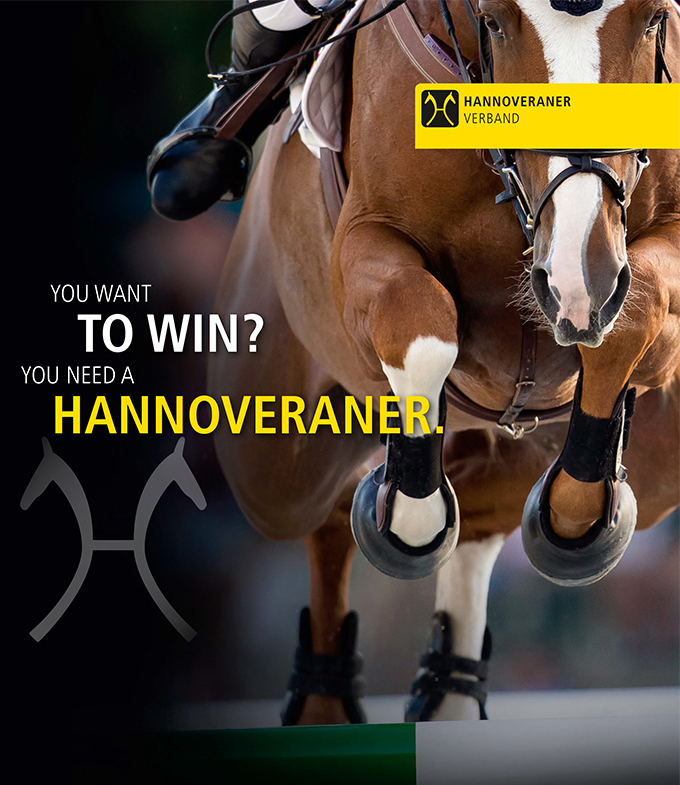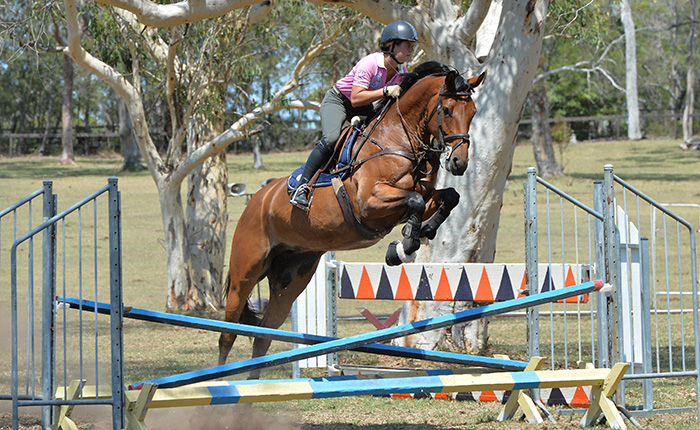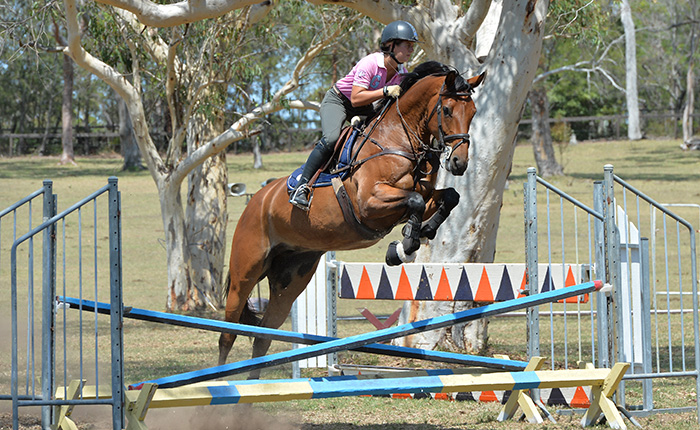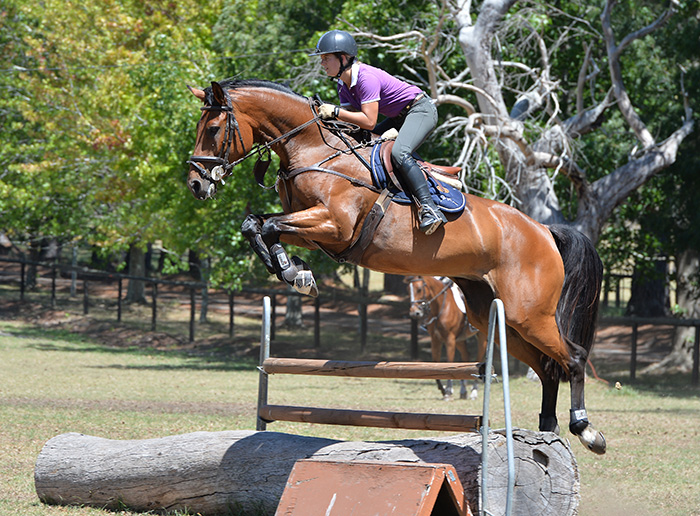George Morris works with the next generation of horses…
Story – Christopher Hector Photos – Roslyn Neave
George Morris is a great judge of a horse, and back in 2014 he saw the potential in Gabi Kuna’s Cristalline. We all know the story, the mare went on to star at a World Cup final with Chris Chugg, and then was sold for mega mega money to the United States where she went well for her new owner, Adrienne Sternlicht.
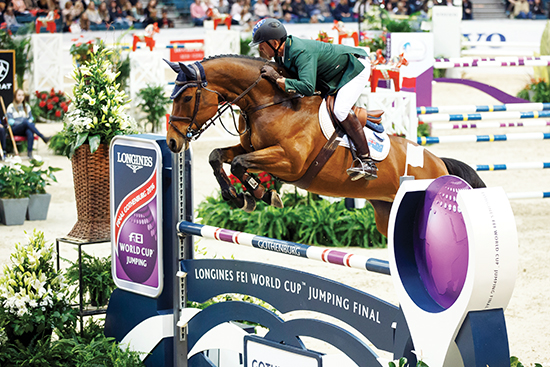
Chris Chugg and Cristalline at the World Cup Final
George Morris is anything but a ‘horse snob’, he is happy to work with green horses, young horses and horses with problems, and with riders who are making their way into the top ranks – and we saw that when he worked with his second group of riders at Vicki Roycroft’s training stables at Mt White.
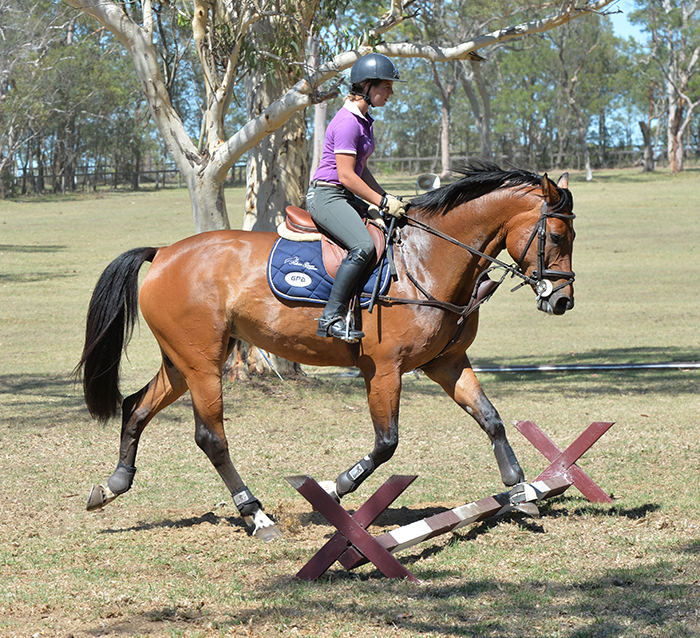
Gabi Kuna and her young imported mare, Cristalline
The second group of riders were on slightly less advanced horses, but they were still a very classy group. Bonnie Martin and Dyranta (imp), Brooke Campbell and Uklarina (imp Germany), Gabrielle Kuna and the imported mare, Cristalline I (by Cristallo), Jake Hunter and Midnight Rock xx, Alyssa Mathers and Moonprint (Camelot Ego Z and out of Alyssa’s good showjumping mare, also Moonprint) and Jade Middleton and Evanescence (Brilliant Invader/Salute).
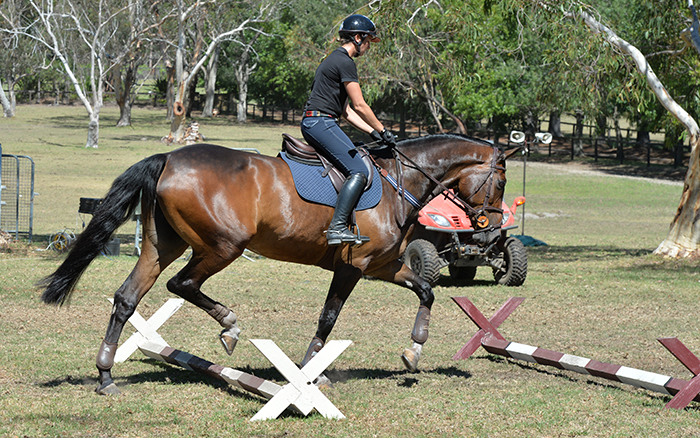
Brooke and Uklarina, also imported
As always the warm-up was crucial, and had to be perfect. Transitions, lots of transitions, and a little shoulder fore, shoulder out, “now over the poles, always interrupt the lateral work with work on straightness.”
“After every pole, a little half halt, then give. The half halt regulates the impulsion. The give lets him stretch and use his body.”
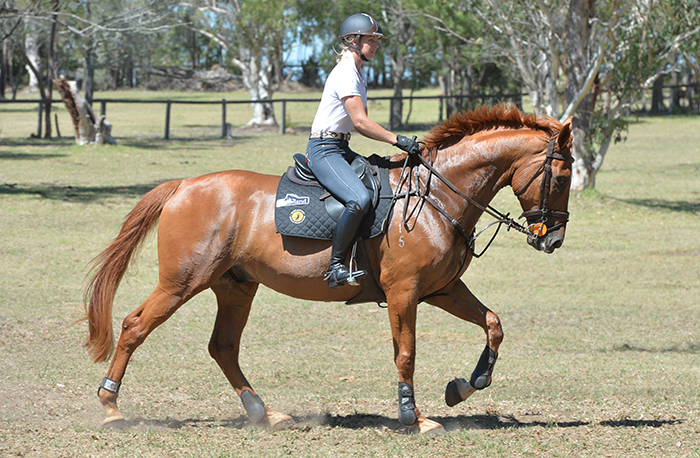
Alyssa Mathers and Moonprint demonstrate counter canter
There was canter, but lots of it counter canter. “Half my work in canter is in counter canter. I live in counter canter.”
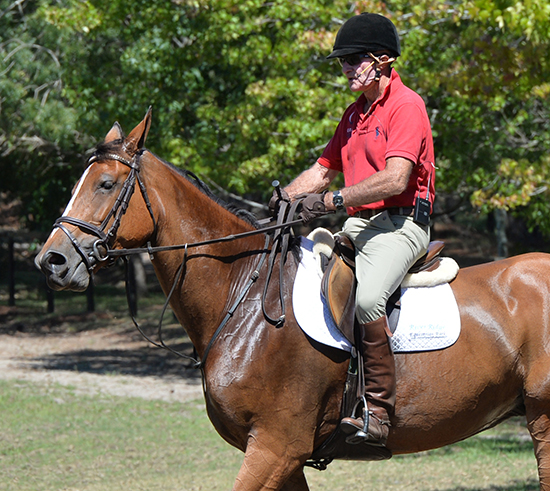
It was time for George to ride one of the horses, and of course, he picks the one that looks the most difficult, Bonnie’s Dyranta, who so far has shown not the slightest hint of coming into balance, responding to every attempt to make her round, by pushing her nose further in the air… George is not daunted:
“Most people try to pull the neck down. NO. We want to raise the base of the neck and we don’t need gimmicks – I haven’t used draw reins for sixty years. Getting the horse’s head down is a consequence of active hind legs. When the hind end is active, the croup drops – most resistance is not in the hand, it is in the hind end.”
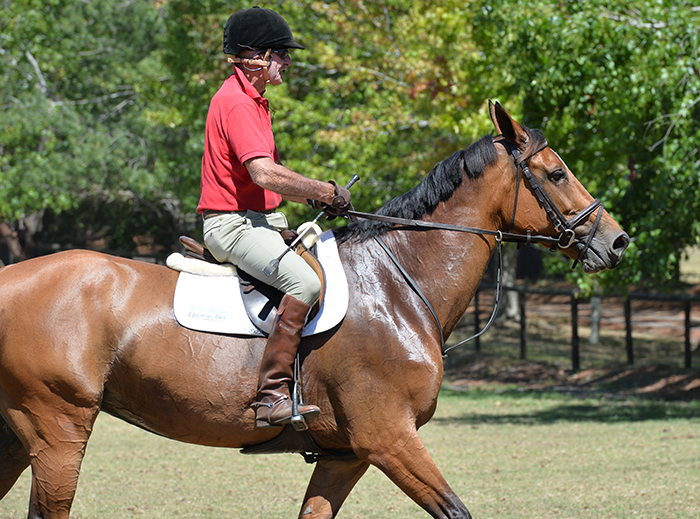
“I keep my hands up, because this horse knows exactly how to get away from my hands. This horse is tough because she has old habits, and she has become very upside down in her conformation.
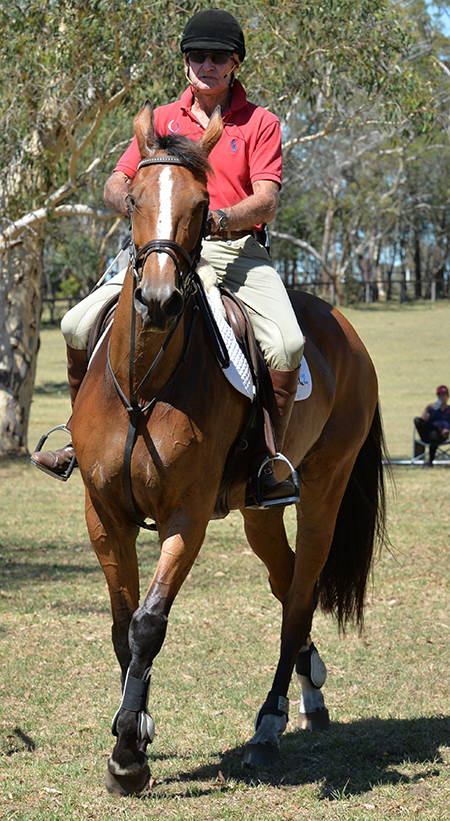
“The important thing is to get the horse forward and active, then you don’t have to be rough, but ask. If she is soft, I’m soft, if she resists, I resist. I close my hand and resist in direct proportion to the horse’s resistance.”
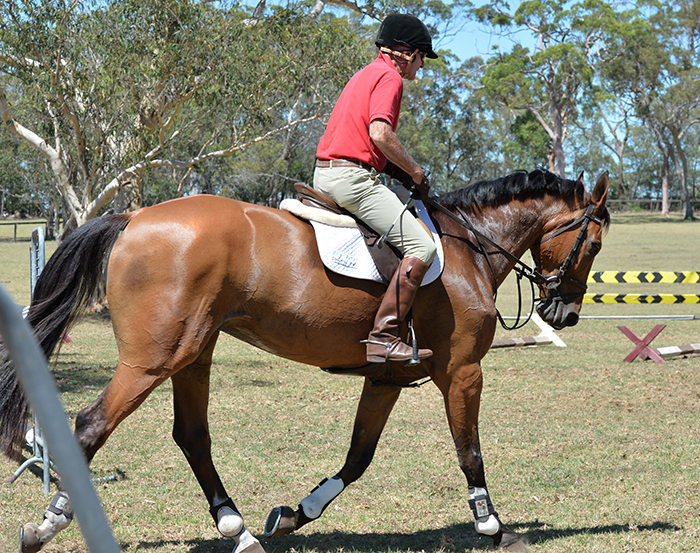
“But the horse must be going forward. Impulsion precedes everything, it is the first lesson of the horse. This is the hard part – not the jumping.”
And George was not making it easy for himself, he was riding the horse in figures of eight, asking for flying changes, changing the lateral flexion to make the horse let go and give its body, and yes, eventually Dyranta did soften. You would not say the horse was cured, we are talking horsemanship here, not miracles, but you could clearly see that if you persisted down this path, eventually the horse would come on the bit and be round…
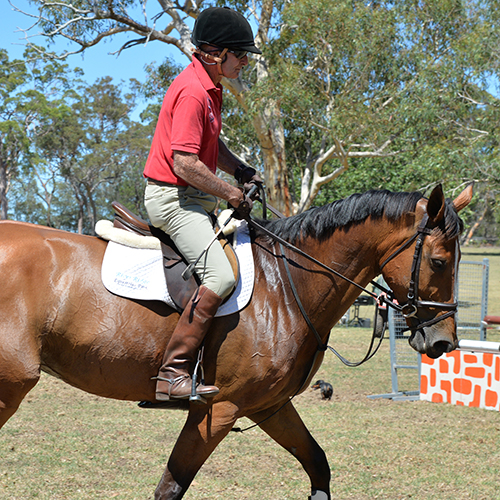
George stressed that Bonnie should not feel alone: “I had one of my team riders and I sent him to Hans Hoorn, and Hans came to me and said, George, that boy can’t even get a horse on the bit. I said, I KNOW. This rider had been to the WEG, he’s been to the Olympics, and he can’t get the horse on the bit.
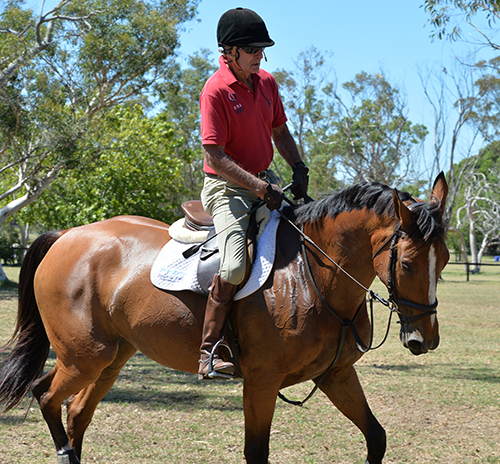
That’s why they resort to gimmicks, these arrogant jumping riders who know nothing, but it doesn’t work, it ruins the horse, and that is when the horses spend all the time in veterinary clinics to make up for their bad riding.”
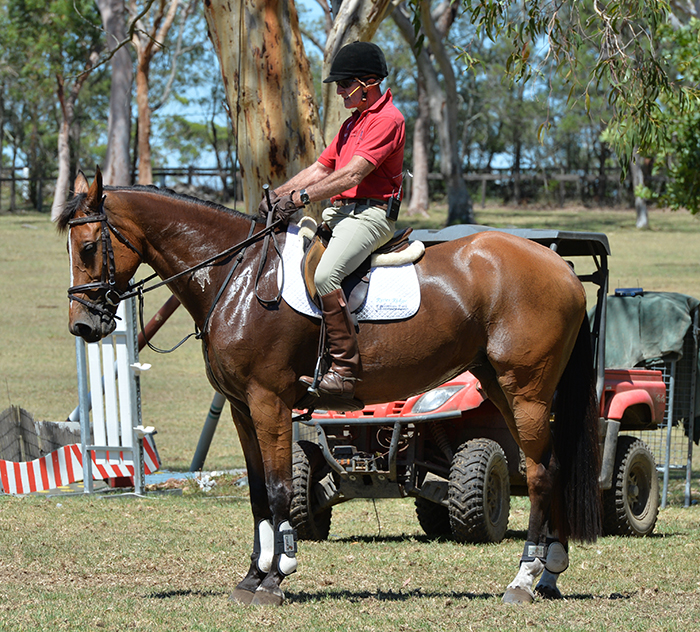
next the group start to work on jumping skills
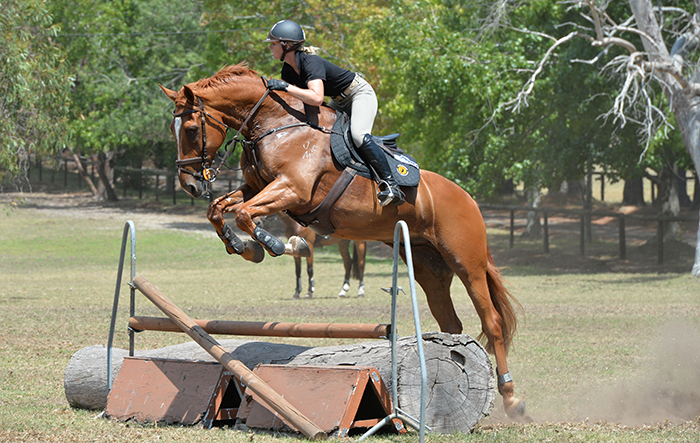
Now it was time for this group to jump. George had set up a wall behind a log, and it really had these less experienced horses spooking:
“I constructed that fence deliberately to get that reaction, because that fence looks different from all the fences you will see at a horse show.”
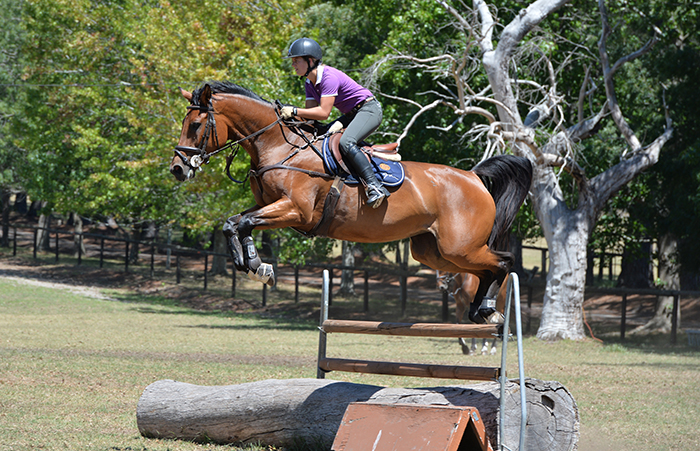
Gabi and Cristallne, careful from the start
Really today’s lesson was a lot about working through apprehension and spook going to a fence… Jake Hunter’s horse has a worry about water and ditches, and George is advising him to use the stick just before the Liverpool rather than too early. “Most riders use the stick too early, and the horse has the chance to duck out.”
Again, Gabi is counselled to use the stick gently with her youngster:
“The stick in that situation prevents accidents, and that is doing the horse a favour. The important thing is the timing and the intensity. There is a scale from 1 to 10, just resting the stick on the horse is 1.”
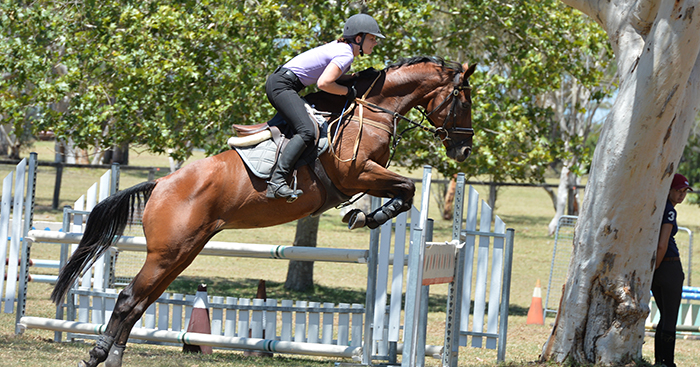
Jade Middleton and Evanescence
We move on to another horse frightener, the open water. “When you jump the ditch the second time, remember that the second time is often the most difficult.”
Again, timing is crucial: “Don’t use the stick eight strides out, wait until you are committed, until you see a stride, then go to the stick.”
There are alternatives to the stick: “The cluck is a great aid, it is not so strong, but it makes the leg aid stronger. The cluck is a confidence builder for the rider as well, when I am nervous about a fence, I cluck to myself.”
more follows
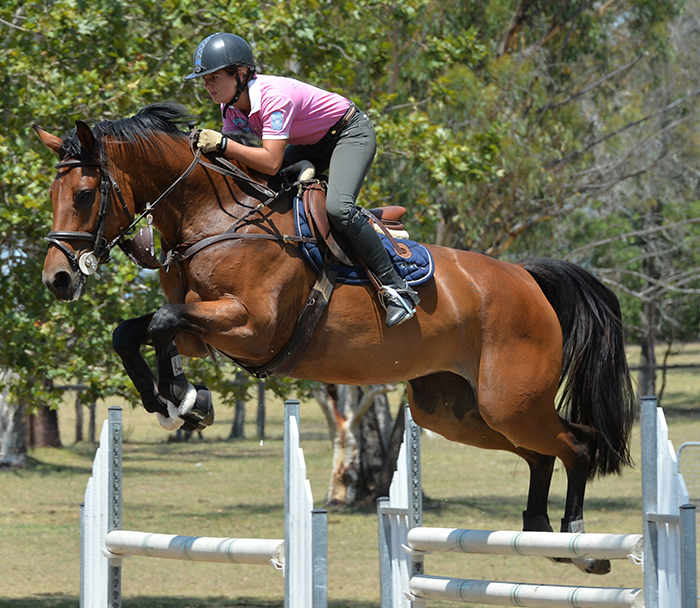
Cristalline, honing her skills under George’s watchful eye
And this is a time when practice, perfect or otherwise, is not advised. “Once they’ve got it, don’t practice it or they get sloppy and step on the tape of the water jump at the show.”
George was concerned that in his groups, the jumping skills were always better than the dressage skills. “It’s all over the world, 80% of the top jumping riders put on draw reins, proud, arrogant riders who produce horses with hollow backs and their back legs out behind them. It is like going to the gym and working incorrectly, it is crippling to the horse to work it in the wrong way – they get by thanks to the vets and their injections. But the horses end up damaged structurally and psychologically.”
“In fact, researchers have settled on what they believe is the magic number for true expertise: ten thousand hours.”
Malcolm Gladwell, Outliers: The Story of Success
“You can jump with just natural talent but you can’t learn dressage by talent, you have to be educated.”
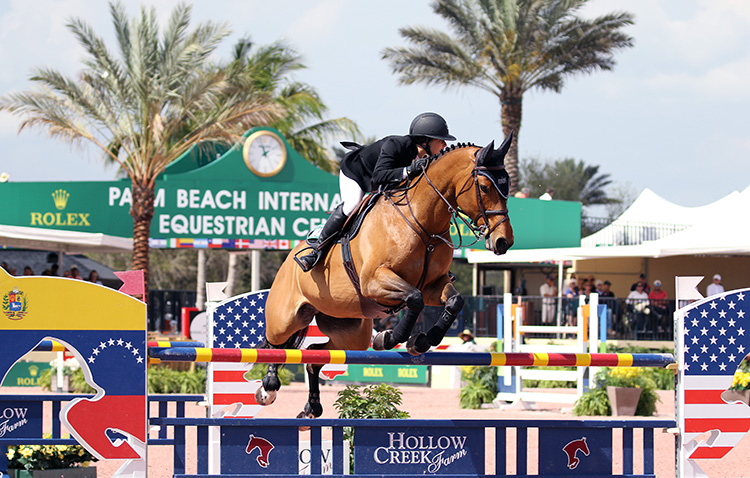
Cristalline with her new owner, Adrienne Sternlicht in Florida. The pair competed, and won, in Europe
Interested in showjumping and jumping training? Check out our library of great articles with the world’s best
http://www.horsemagazine.com/thm/article/show-jumping/
Want to breed your own jumping horse? There’s a range of stallions available from International Horse breeders, like the Hanoverian stallion Diacontinus. Go to www.ihb.com.au and see them all.
